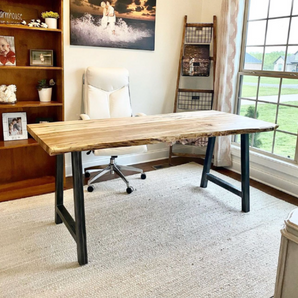The Ultimate Overview to Choose Sturdy Dining Room Table Legs
The Ultimate Overview to Choose Sturdy Dining Room Table Legs
Blog Article
A Comprehensive Check Out Eating Table Leg Styles: Discovering the Suitable Suit
Picking the best eating table leg style is vital for both aesthetic charm and practical performance. For those with bigger tables, trestle legs guarantee tough support, whereas hairpin legs present a mid-century modern vibe with their minimal design. The x-shaped legs blend modern design with enhanced stability.
Standard 4 Legs
Amongst the various types of dining table leg styles, the conventional four-leg style continues to be a classic choice for many homes. This traditional setup uses an unified mix of capability and visual appeals, making it a perennial favorite. Four legs provide balanced support, ensuring the table remains stable and with the ability of bearing substantial weight. This is particularly advantageous for households that regularly organize huge celebrations or use their table for several purposes, such as work or crafting.
From an aesthetic point of view, the conventional four-leg design can be conveniently adjusted to different interior designs. Whether crafted from wood, metal, or a mix of materials, these legs can be intricately carved, streamlined and minimalistic, or anything in between. Their versatility allows them to enhance both rustic and contemporary setups flawlessly.
Moreover, the uncomplicated framework of the four-leg design promotes simplicity of movement and positioning within a space. Unlike even more complicated bases, this style decreases obstructions, giving adequate legroom for diners. In recap, the traditional four-leg eating table leg style weds enduring style with useful functionality, making it a sharp choice for those seeking both kind and function in their eating furniture.
Stand Base
Commonly commemorated for its elegant and space-efficient design, the pedestal base is a recognized choice to the traditional four-leg configuration in dining table leg styles. Without corner legs, restaurants are paid for better liberty of activity, making it a perfect option for round and oval tables that promote more intimate and inclusive events.
The central column itself uses a canvas for detailed layouts and creative expressions, including an element of visual passion beneath the table. In summary, the stand base incorporates capability with style, making it a refined and practical alternative for diverse dining environments.
Trestle Legs
Trestle legs provide a robust and ageless foundation for eating tables, identified by their straight cross-bracing and sturdy assistance beam of lights. Stemming from medieval times, this design has advanced yet retained its vital structure, making it a perennial fave in both typical and contemporary settings. The central trestle light beam, typically supported by 2 or even more upright blog posts, provides remarkable stability, allowing for larger table sizes without the demand for extra legs.
A considerable advantage of trestle leg tables is the enough legroom they offer. Unlike tables with four edge legs, the lack of obstructions at the table's sides gives unblocked space for chairs and diners, enhancing comfort and availability. This makes trestle tables optimal for accommodating bigger events, whether in an eating space or a banquet hall.
The aesthetic convenience of trestle legs hop over to here is noteworthy. Readily available in a variety of materials such as wood, metal, and composite, they can be ended up to match a wide variety of interior styles. From rustic farmhouse to streamlined modern-day styles, trestle legs can be tailored to fit private tastes. Their enduring appeal and functional advantages make trestle legs a compelling choice for those seeking both style and usefulness in their eating table.
Hairpin Legs

The charm of hairpin legs hinges on their simplicity and flexibility - dining room table legs. Available in a series of materials, hop over to here consisting of steel and brass, they can be finished in various colors to enhance various indoor designs. Whether matched with a rustic wooden tabletop or a contemporary glass surface, hairpin legs effortlessly blend capability with a touch of vintage beauty
Resilience is one more remarkable function of barrette legs. In spite of their delicate look, these legs are crafted to birth substantial weight, guaranteeing the eating table continues to be steady and secure. In addition, they are reasonably very easy to mount, making them a popular selection for DIY lovers and specialist furnishings manufacturers alike.
X-Shaped Legs

Constructed from products such as steel, timber, or a mix of both, X-shaped legs can be tailored to match different style preferences. Steel legs frequently offer a sleek and commercial feeling, ideal for loft-style houses and contemporary eating areas. On the other hand, wood X-shaped legs supply a warmer, extra rustic charm, ideal for farmhouse or eclectic interiors. The adaptability in products allows home owners to personalize their table to much better fit their general layout system.
Additionally, the engineering behind X-shaped legs ensures even weight distribution, reducing the threat of wobbling and enhancing sturdiness. This makes them especially appropriate for bigger eating tables that require added assistance. Fundamentally, X-shaped legs blend useful engineering with modern appearances, making them a timeless option for varied eating settings.
Conclusion
An extensive understanding of table leg styles exposes the unique attributes and advantages of each style. Traditional 4 legs supply stability and classic allure, while stand bases provide legroom and a streamlined look. Trestle legs make certain durable assistance for larger tables, and hairpin legs present a mid-century modern-day visual. X-shaped legs incorporate modern style with enhanced security. Choosing the ideal leg style makes sure both functional and visual contentment in any kind of eating space.
Report this page